by Aaron Tan (4C)
‘How does the man on the moon cut his hair?’ asks Arron Tan Bin, Year 3 and CCA Leader of the Y1–4 RI Astronomy Club. His left hand is tucked comfortably in his trouser pocket, and his right grasps the mic confidently as he addresses the club. He pauses before delivering the punchline.
‘He clips it! [eclipse, get it? haha!]’ The club members in attendance break out in uproarious laughter. Perhaps ironically. Arron laughs along with them. This jovial scene perhaps best describes the light-hearted and fun-loving spirit of the Astro Club, as it is fondly known to its 34 members. The thought of so many talented individuals with diverse interests, drawn together by the beauty of the night sky, is an inspiring one.
‘So, what do you like most about Astro Club?’ I ask Arron after everyone leaves. He does not hesitate. ‘That would have to be our members. They always bring so much life to the club sessions. They are the people that make astronomy fun.’ Looking back at those smiling faces and corny jokes we shared over the past session, I could not agree more.
The RI Astronomy Club is an elusive society. Operating only in the darkness of the night, when the stars are out, few apart from insiders really know what goes on during the club sessions. When I asked a clueless classmate what he thought went on inside, he replied, ‘I don’t know. I guess they look at stars all day.’
Arron laughs when I tell him this. ‘Well, that’s not wrong.’ He shoots back, half in jest. We sit at the front of the Blue Room, waiting for the club meeting to begin. At 6.11pm, the evening sun has just begun to set and people are streaming in. ‘First,’ says Arron, ‘as usual, we will be having a lecture on the more “academic” side of Astronomy. Stuff like astrophysics and stellar evolution.’ A confused me consults Google to find out what those actually meant. Definitely beyond me.
Today, we learn about ‘colours’ in space. Like these:
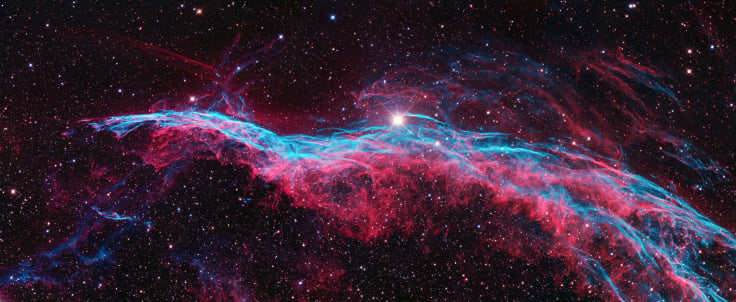
Ever wondered why exactly nebulae are so colourful and pretty? Me neither, but now, it’s time to find out. The long and complicated lecture was delivered by a Year 5 senior, and to an uninitiated mind like mine, it was tough to wrap around into another part of a vast and mysterious universe.
In short, for the benefit of our curious readers, these colours are understood to be a result of the radiation of stars in the nebulae. In the presence of the radiation emitted by these stars, electrons present in the gases of the nebulae will get excited and jump to a higher energy state, Vint explained. After a while, of course, they will return to a lower one, but not before releasing some of that energy as photons — light.
Evidently, different energy changes in different gases result in different wavelengths of light being emitted, thus generating the multitude of colours we can observe from the comfort of our observatories. Think about how some street lamps emit orange light, while others emit blue light—the concept is similar.
Fascinating stuff, I know. It is always amazing to see how human ingenuity can help us explain natural phenomena, even in those as far off and distant as an alien nebula. Such are the things the members of the club learn every week. A true haven for the hungry mind.
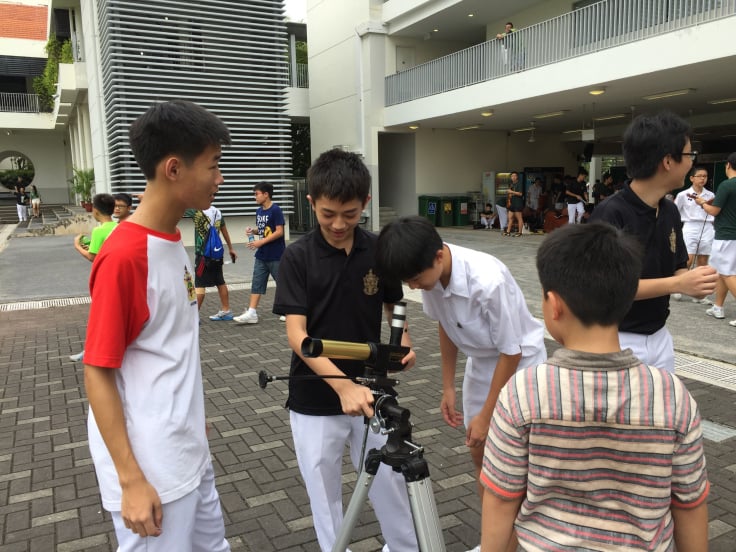
Soon after came the practical segment. ‘After lectures,’ said Arron, ‘we’ll usually participate in a less academic activity, such as Rocket Building or Astrophotography.’
‘Rocket building?’ my ears perked up.
‘Not today, unfortunately,’ said Arron. ‘But we will, in fact, be making bookmarks.’ I am handed a piece of black card. Just my luck.
Being denied the opportunity to observe this majestic event in person, I ask Arron what it was like. Was there actually rocket science involved? Arron pondered for a while. ‘Not exactly,’ he said. ‘But something like that. I guess it allows us to apply the laws of physics to real life, to see how it can help us in real life situations. It’ll probably be easier if I just told you what we did.’
He sketched me a crude diagram of his design. ‘We basically design and build rockets out of household items, for example we use cards, a balloon and rope to make a rocket. One of our models involved attaching three balloons to each other in triangular formation, then diverting the air through a straw. We also attached a paper plane to it for… no particular reason,’
‘It actually worked,’ Arron muses. ‘It went really far, but one fault was that it kept spinning around wildly which affected its trajectory. It could have gone further.’
It’s the little activities like these that bond the club together and it’s what makes them such a tight-knit family. ‘It may not seem like much,’ says Arron as I punch holes in the shape of Virgo on my little black card. ‘But it’s really what keeps us together. Just doing fun stuff with each other.’
It was 8 o’clock, and time for the highlight. Stargazing. ‘This is the part where we look at stars,’ says Arron.
‘Right now we’re going to observe the night sky, look at the constellations.’ I asked him what his favourite one was.
‘It’s not exactly a constellation,’ he replies, leading me to an unoccupied telescope. He gazed through it and adjusted it a little. ‘Here. The Jewel Box star cluster. In Crux.’ He lets me peer through.
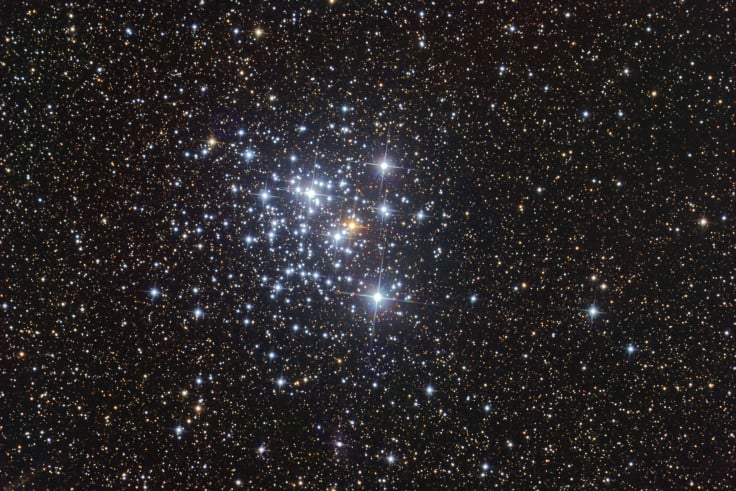
Wow. Impressive,’ I utter in amazement.
‘It’s one of the brightest star clusters in the night sky and it looks really nice,’ explains Arron. ‘In addition, it’s really easy to spot.’
Arron goes on to introduce me to the constellations. I have never felt more confused, yet more intrigued at the same time. As we moved from Scorpio, to Sagittarius, to Centaurus, something stirs inside me. Standing there under the starlight, fascinated, amazed, enthralled even, by these ancient celestial bodies: Fiery yet serene, so very distant, yet so very near.
Looking out into the expanse, I cannot help but feel so small, yet so significant. Perhaps therein lies the beauty of the night sky.
And perhaps that’s what the members of this club seek out too. And among their number, along with the hundreds of thousands of astronomers out there, seeking out the truth, looking at something so much bigger, so much grander, so much more unimaginably complex than any of them could ever hope to imagine, and trying to understand it. Maybe, just maybe, it is a beauty even greater than what they try to apprehend.
At around 9–9.30pm, we pack up for the day and go home. The members of the club say their goodbyes and go their separate ways. I follow Arron to the train station. I thank him for the opportunity to be part of such a fascinating experience.
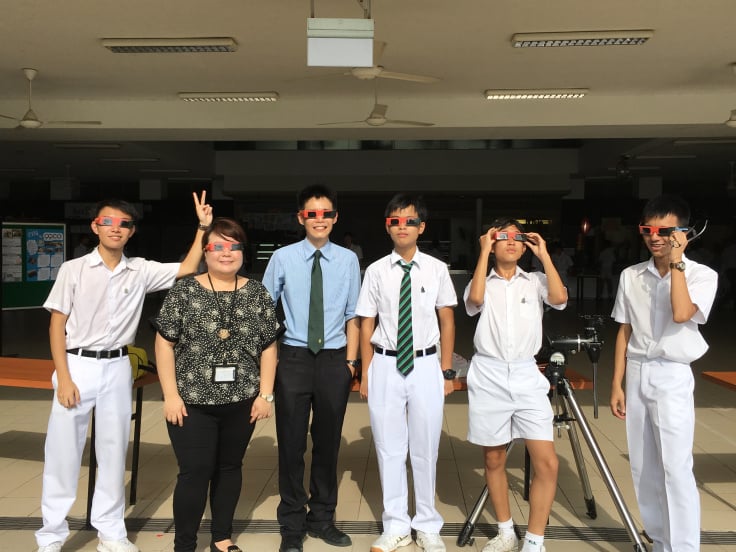
‘Oh, don’t mention it. It’s what I do.’ He pauses for a while. A sly grin creeps onto his face.
‘Want to hear an astronomy joke?’
‘Yeah?’
‘Why can’t astronomers focus on anything?’
‘I don’t know. Why not?’
‘Because they keep… “spacing” out!’
We burst into rapturous laughter, if only ironically at the base and, frankly, horrible pun
Arron has created.
‘Please.’
I’m thinking of returning for another session, if only for the fun of it. For, on that night, I learnt that Astro Club was really so much more than just looking at stars all day.
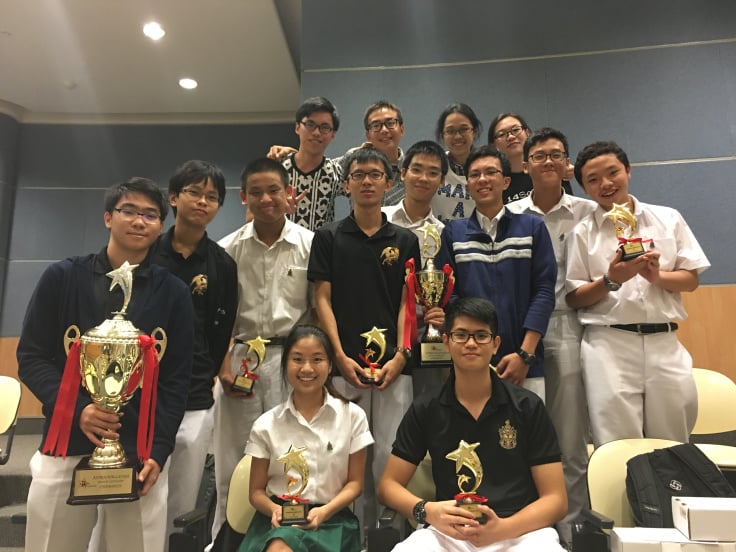
For more adventures of the Y1-4 and Y5-6 Astronomy Club,follow them on their combined Instagram page
https://www.instagram.com/rafflesstargazers/